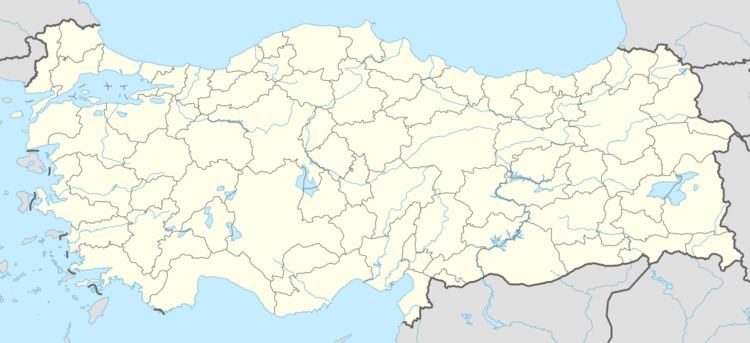Website www.malazgirt.bel.tr Local time Sunday 6:55 AM | Post code 49400 Area 1,527 km² | |
 | ||
Weather -6°C, Wind N at 3 km/h, 96% Humidity | ||
Malazgirt (also Malâzgird; Armenian: Մանազկերտ Manazkert; historically Manzikert, Μαντζικέρτ) is a town in Muş Province in eastern Turkey, with a population of 23,697 (year 2000).
Contents
Map of Malazgirt, Mu%C5%9F, Turkey
Founding
The settlement dates to the Iron Age, according to the Soviet Encyclopedia it was established during the reign of the Urartian king Menua (r. 810–785 BC). The Armenian name Manazkert is supposedly shortened from Manavazkert (Armenian: Մանավազկերտ), adopted in Greek as Μαντζικέρτ. The suffix -kert is frequently found in Armenian toponymy, meaning "built by". According to Movses Khorenatsi, Manzikert was founded by Manaz, one of the sons of Hayk, the legendary and eponymous patriarch and progenitor of the Armenians. It was successively part of New Assyrian Empire, Median Empire, Persian Empire, Seleucid Empire, Kingdom of Armenia, Parthian Empire, Roman Empire, Sassanid Empire, Byzantine Empire, Rashidun Caliphate, Umayyads and Abbasids after demise of Urartu.
Medieval
The lands around Manzikert belonged to the Manavazyans, an Armenian nakharar family which claimed descent from Manaz, until 333 A.D., when King Khosrov III Arshakuni of Armenia ordered that all members of the family be put to the sword. He later awarded the lands to another family, the Aghbianosyans. Manzikert was a fortified town, and served as an important trading center located in the canton of Apahunik' in the Turuberan province of the ancient Kingdom of Armenia. It also served as the capital of the Kaysite emirate from around 860 until 964. After the Armenian revolt of 771-772 the Abbasid government encouraged the migration of Arab tribes to the region and this resulted in the settling of Arab tribes in the vicinity of Malazgirt. In 968 The Byzantine general Bardas Phokas captured Manzikert, which was incorporated into the Byzantine katepanate of Basprakania (Vaspurakan). In 1054, the Seljuk Turks made an attempt to capture the city but were repulsed by the city's garrison under the command of Basil Apocapes.
The Battle of Manzikert was fought near the town in August 1071. In one of the most decisive defeats in Byzantine history, the Seljuk sultan Alp Arslan defeated and captured Emperor Romanus Diogenes. The Turkish victory led to the ethnic and religious transformation of Armenia and Anatolia, the establishment of the Seljuk Sultanate of Rum, and later the Ottoman Empire and the Republic of Turkey. The Seljuks pillaged Manzikert itself, killed much of its population, and burned the city to the ground. It was successively part of Ahlatshahs (their rule was briefly interrupted by Kingdom of Georgia), Ayyubids, Sultanate of Rum, Ilkhanids, Karakoyunlu, Timurids, Akkoyunlu and Safavids before Ottoman rule.
Modern
In 1915 Manzikert was part of Bitlis Vilayet and had a population of 5,000, the great majority of them Armenians. The city's economy revolved around the cultivation of grain, trade and the production of handicrafts. There existed two Armenian churches, Yerek Khoran Surb Astvatsatsin (Three Altars Holy Mother of God) and Surb Gevork (St. George, called St. Sergius by H. F. B. Lynch), and one Armenian school. Like many other towns and villages during the Armenian genocide, its Armenian population was subjected to massacres and deported. In Russia's spring advance of 1915, they reached the city, but were repelled by a Turkish counter-attack shortly after.
